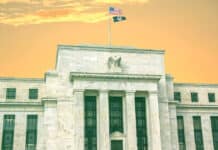
-
There is some potential disconnect around the Fed
-
The US consumer is doing just fine
-
Two positive drivers in support of the market backdrop
The (Jackson) hole in the story
According to current market pricing, a Fed rate cut in September is virtually a done deal. Except that it really is not. To be clear, we are not saying that a rate cut next month is ruled out. But the near-term Fed outlook is a lot murkier than the market pricing suggests, in our view. And this for a number of reasons. For a start, let’s remember that the Fed delivered a message around patience, uncertainty and prudence back in July. What has changed since and can this tip the balance? Two main things: On the data front, we did have a rather miserable August nonfarm print. And then, the political noise and pressure on the Fed has ramped up further. Back to the data, the Fed is precisely data-dependent but it does not mean that one single data release can necessarily change the whole policy outlook. This is because we need to observe a stronger signal beyond one data observation. As underscored by Erik Weisman, our Chief Economist, it is hard to argue that the weak payroll numbers as well as the marked downward revisions to prior months are consistent with the relatively benign initial jobless claims, JOLTS data, wage numbers, income generation, retail sales, income tax receipts, and asset valuations. In other words, something doesn’t add up and the Fed will want to investigate this a bit more before taking action. So on balance, evidence that the labor market is deteriorating sharply is still insufficient. On the political pressure front, the Fed is likely to stick to its past stance in defense of its independence. In other words, the Fed will cut only when the FOMC reaches a majority vote that it is the right thing to do. Beyond employment, there is still the persisting uncertainty over the impact of tariffs on inflation, which warrants some prudence, especially as inflation continues to look sticky. Overall, it is not clear that Chairman Powell will deliver strong guidance at the Jackson Hole symposium. If the dovish signals elude us, there will be significant pricing out of the odds for a September cut. With that in mind, it is rather tough to embrace a bullish long duration bias at this juncture, especially given where rates currently are and the persistent fiscal woes.
No US consumer stress
As well documented, the health of the US consumer is a critical consideration when analyzing the US macro outlook. The good news is that the latest update of Market Insights’ Health of the Consumer Indicator—which is based on labor, spending, income, debt, wealth, and credit availability—does not signal any signs of mounting stress. So far, the US consumer remains resilient, which is quite reassuring. While it is true that we have observed some moderate slowdown in spending, other factors continue to be healthy, pointing to signs of financial soundness. While we are still awaiting more clarity on the impact of the US immigration freeze and the ongoing trade war, for now, the macro backdrop, in large part helped by the consumer, remains broadly supportive of risky assets.
Two other green lights flashing
When looking at the market backdrop, it is always important to keep an eye on both volatility and financial conditions. It so happens that these two factors appear to be supportive at this point. On the volatility front, rate volatility continues to normalize lower, as illustrated by the MOVE index (a measure of bond market fear) now down to below 80. This is the lowest level we have observed since January 2022, before the beginning of the Fed hiking cycle. On the equity side, market volatility is also well behaved, with the VIX now just short of 16, a few points below its five-year average. Even the policy uncertainty indices have calmed down in a meaningful way. Moving on to financial conditions, these also look rather accommodative. The Fed’s financial conditions index points to market conditions creating a tailwind for economic growth, as opposed to a headwind. Meanwhile, the Goldman Sachs indicator currently hovers around 98.7, well off its recent peak of early April, and the lowest level since early 2022. Overall, the market backdrop appears to be in pretty good shape. One major caveat of course is the valuation landscape, with valuations flashing red across many market segments. As a relevant example, US IG spreads are now down to 73bp, their tightest level since 1998. While we do not necessarily foresee a significant risk of major credit spread tightening, it is also fair to recognize that we are currently stuck in a priced-for-perfection mode.





























